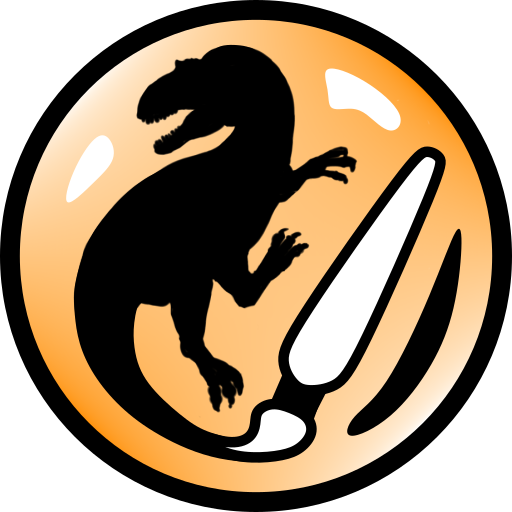I can proudly present the following commissions and press releases.
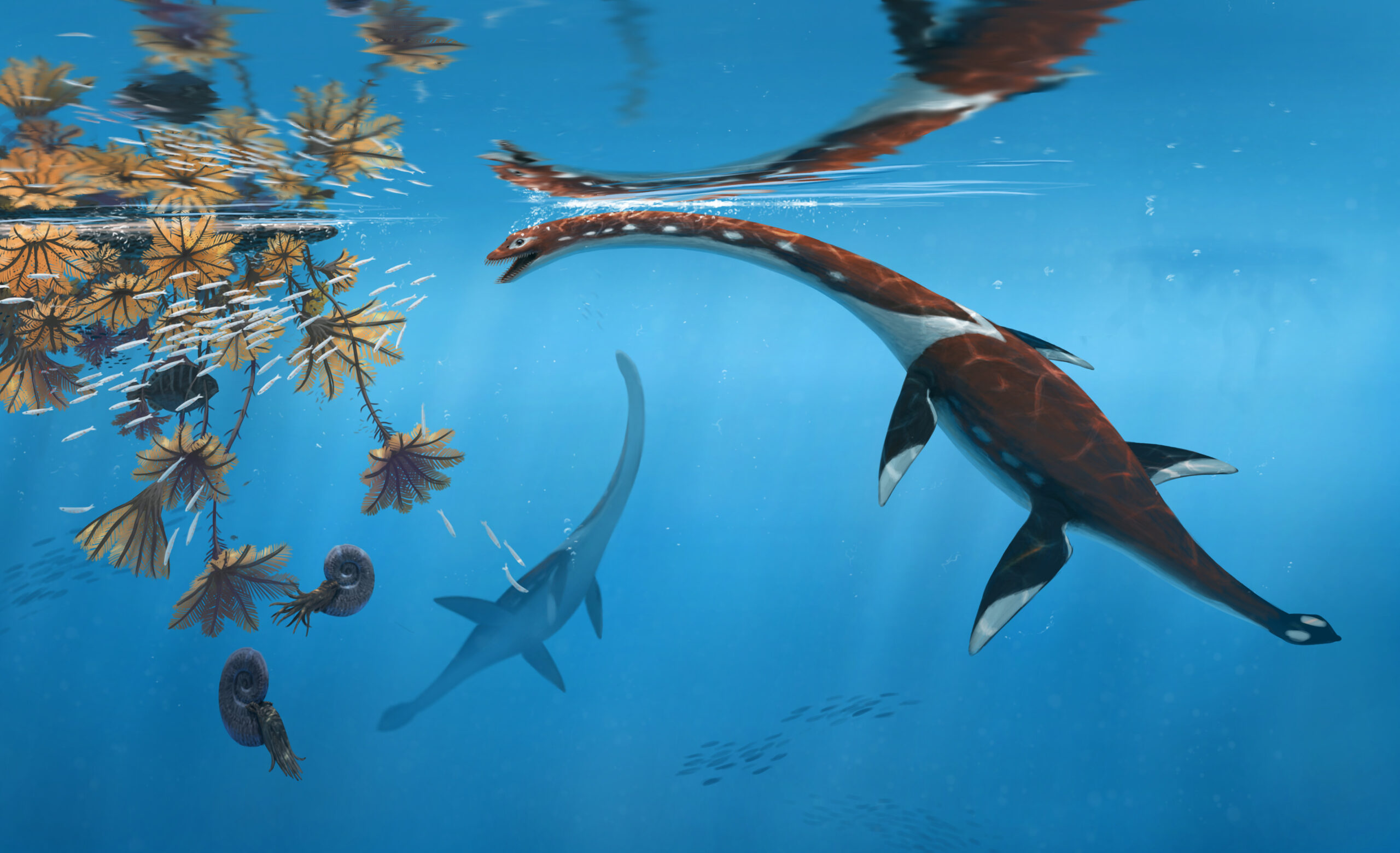
Plesionectes longicollum
Plesionectes longicollum is a new genus and species of plesiosaur from Holzmaden, Germany. It was found in the Lower Jurassic Posidonia Shale from around 183 million years ago. The 3 m long specimen is well-preserved and has been known for some time, but only now was formally described. It shows unique traits like the longest neck seen in any Lower Jurassic plesiosaur.
This piece was done for Sven Sachs and Daniel Madzia (Sachs & Madzia, 2025). You can read more about this species on Sachs’ website: sachspal.de.
For this piece, I had quite some artistic freedom and decided to include the fascinating crinoid Seirocrinus, which there is far too few paleoart of.
Commission for press release, Aug 2025.
Featured in:
– BBC Wildlife Magazine
– Spiegel
– …
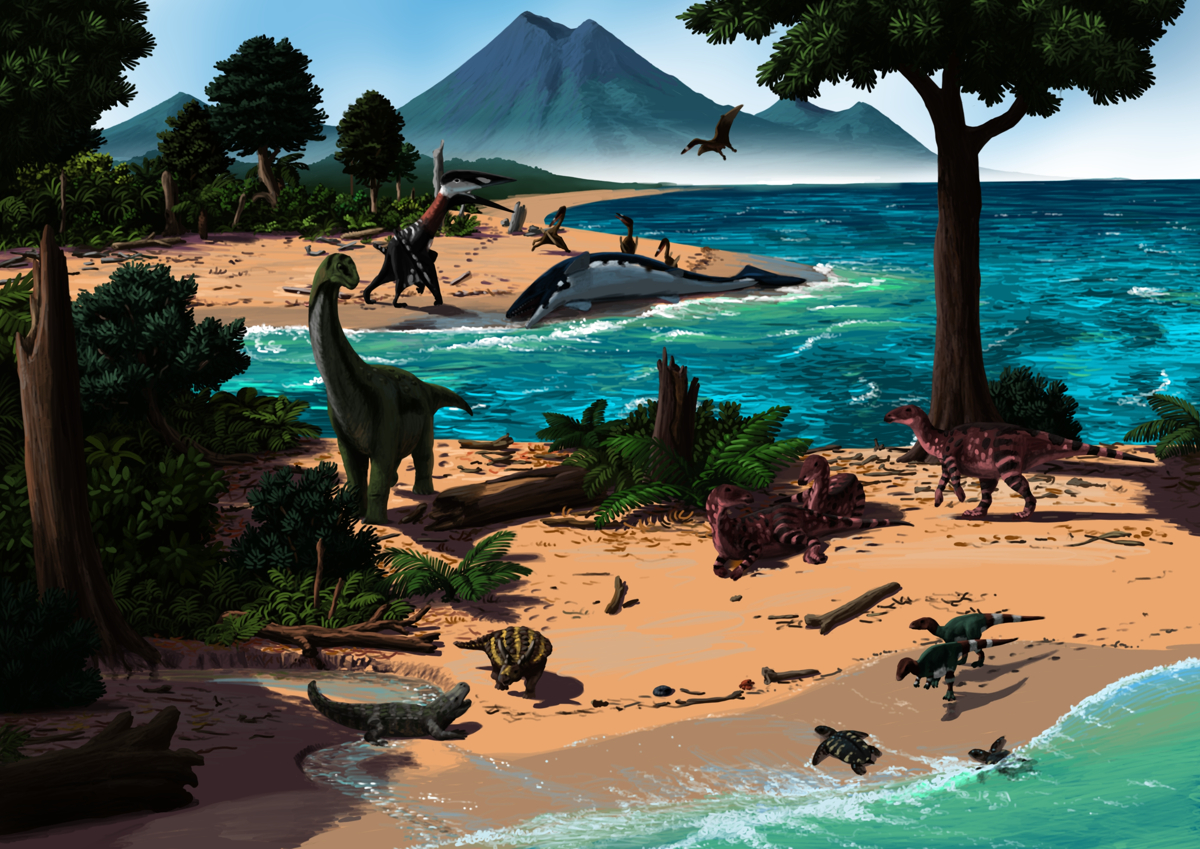
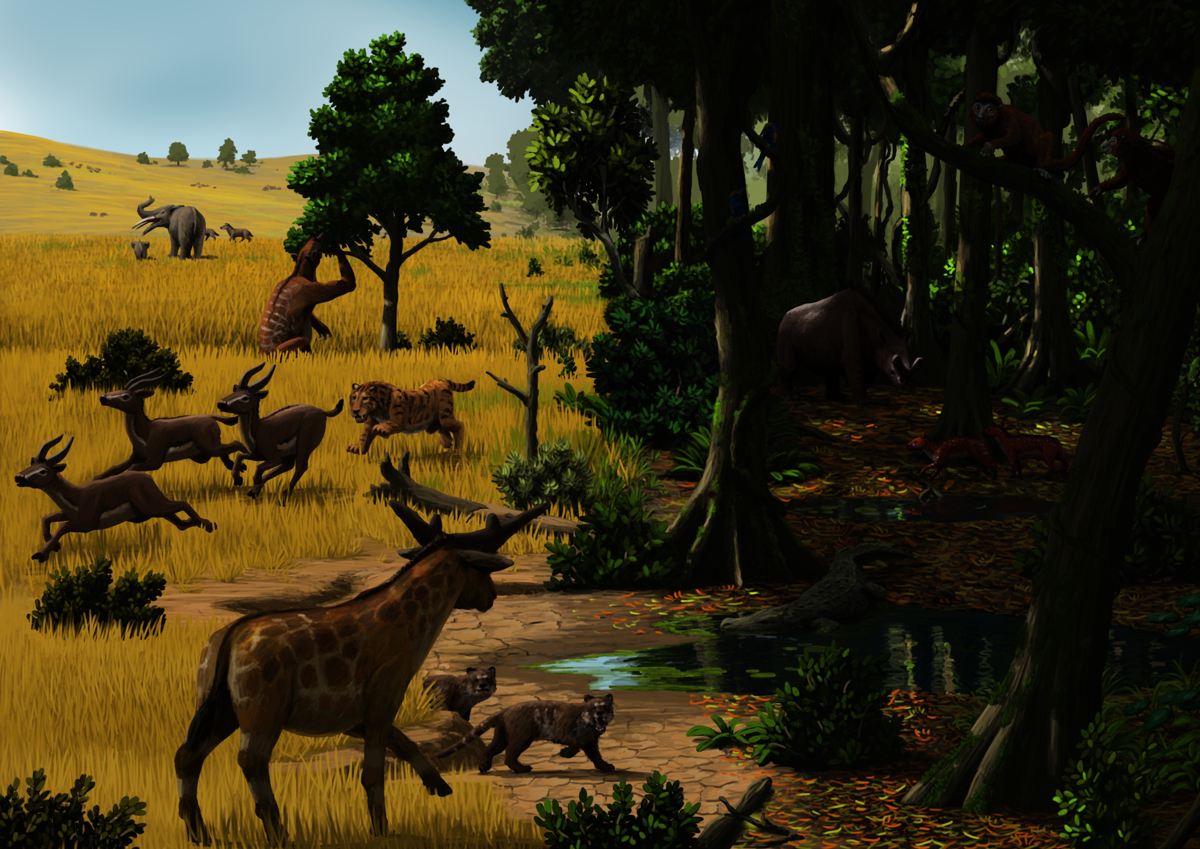
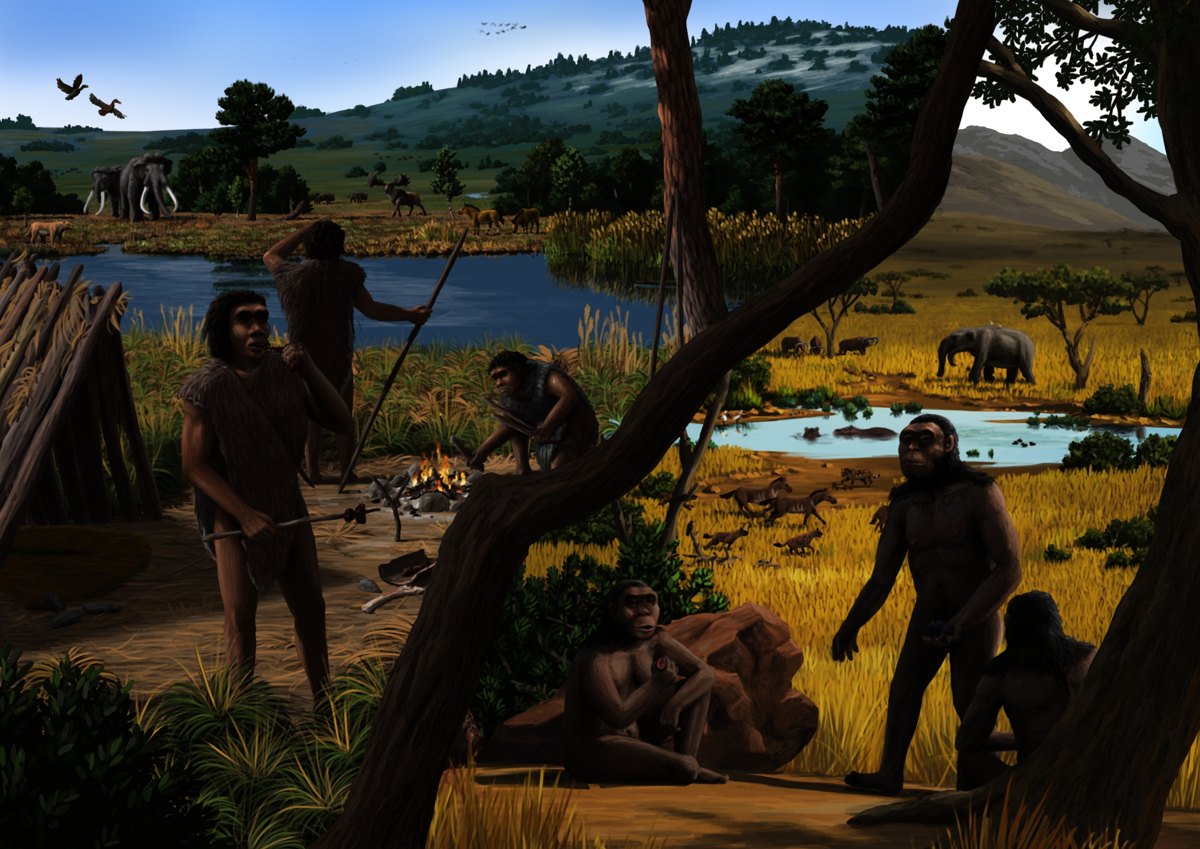
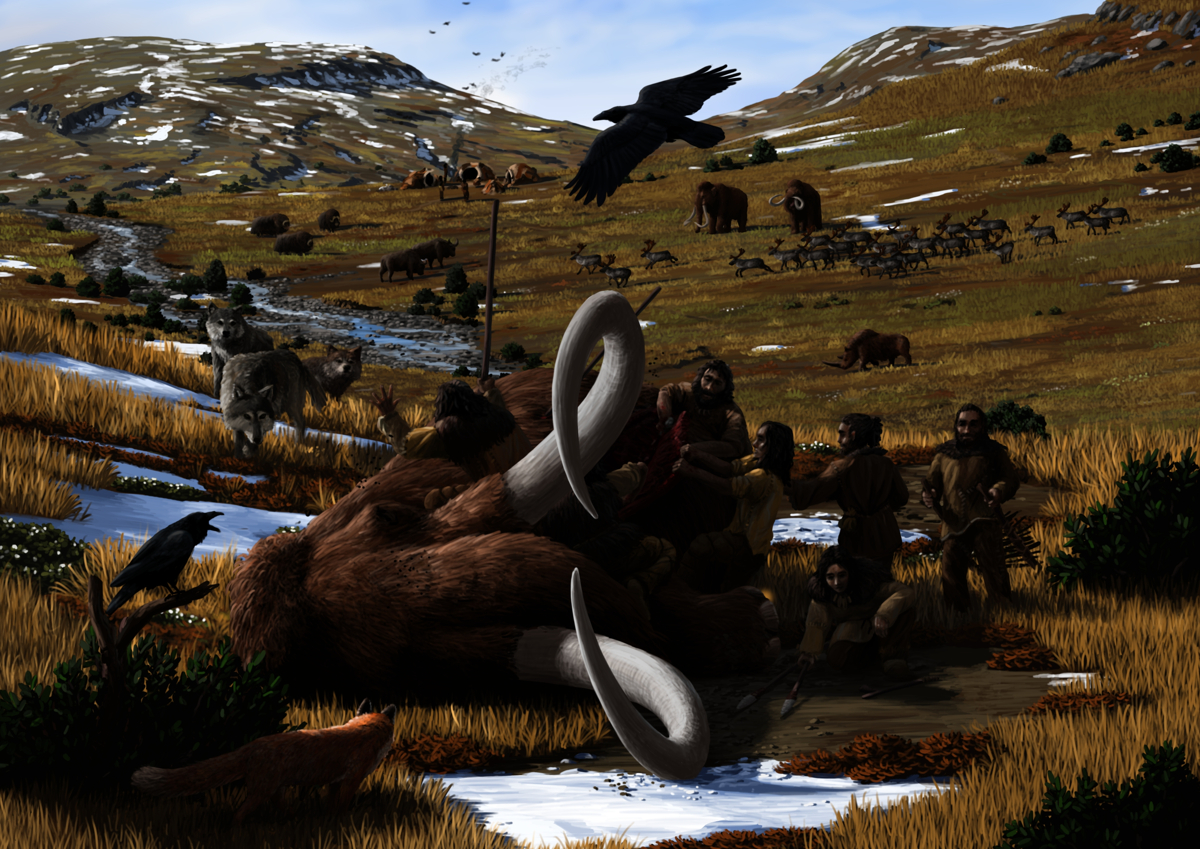
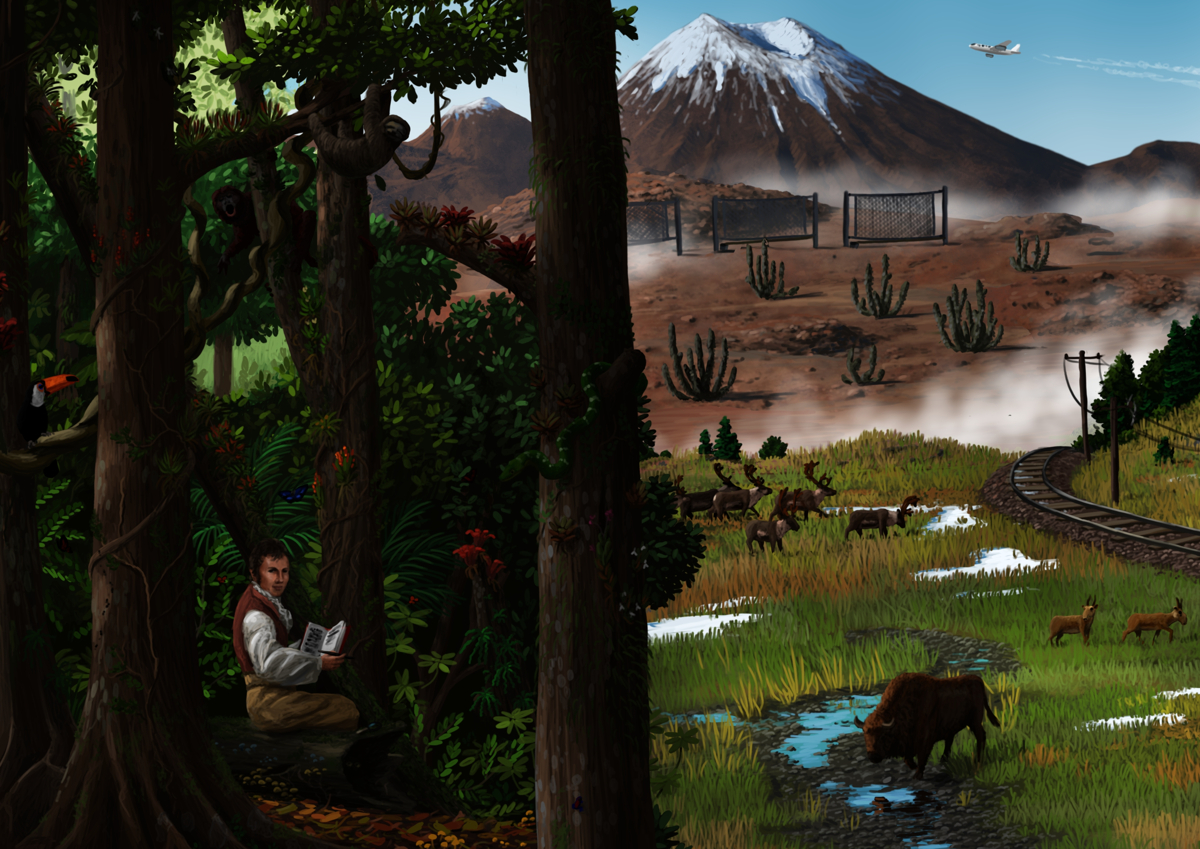
Biogeology Uni Tübingen
This was a five-piece-comission done for the working group “Biogeology” led by Professor Hervé Bocherens at the University of Tübingen. The paleoart is used for their website as well as for presentations and such. The five images represent their five research fields. If you are a student, postgraduate, postdoc or similar and want to join a working group with amazing topics and super-friendly colleagues, definitely check them out: Biogeology Uni Tübingen Website.
First image: “Mesozoic ecosystems”, represented by a reconstruction of the Hateg Island ecosystem.
Second image: “Terrestrial ecosystems of the Paleogene and Neogene”, represented by a depiction of the transition from dense forests to open grasslands.
Third image: “Early hominins’ ecology and ecosystems”, represented by a paleoart of Australopithecus and the paleoecology of its habitat, and a paleoart of Homo heidelbergensis and the paleoecology of its habitat.
Fourth image: “Late Quaternary hominins’ ecology”, represented by a group of modern humans butchering a mammoth in an ice age landscape.
Fifth image: “Modern ecology – links to the past”, represented by a scientist studying the species of a rainforest, fog collectors in the desert, climate change and the rewilding of the landscape.
Featured in:
– Biogeology Uni Tübingen Website
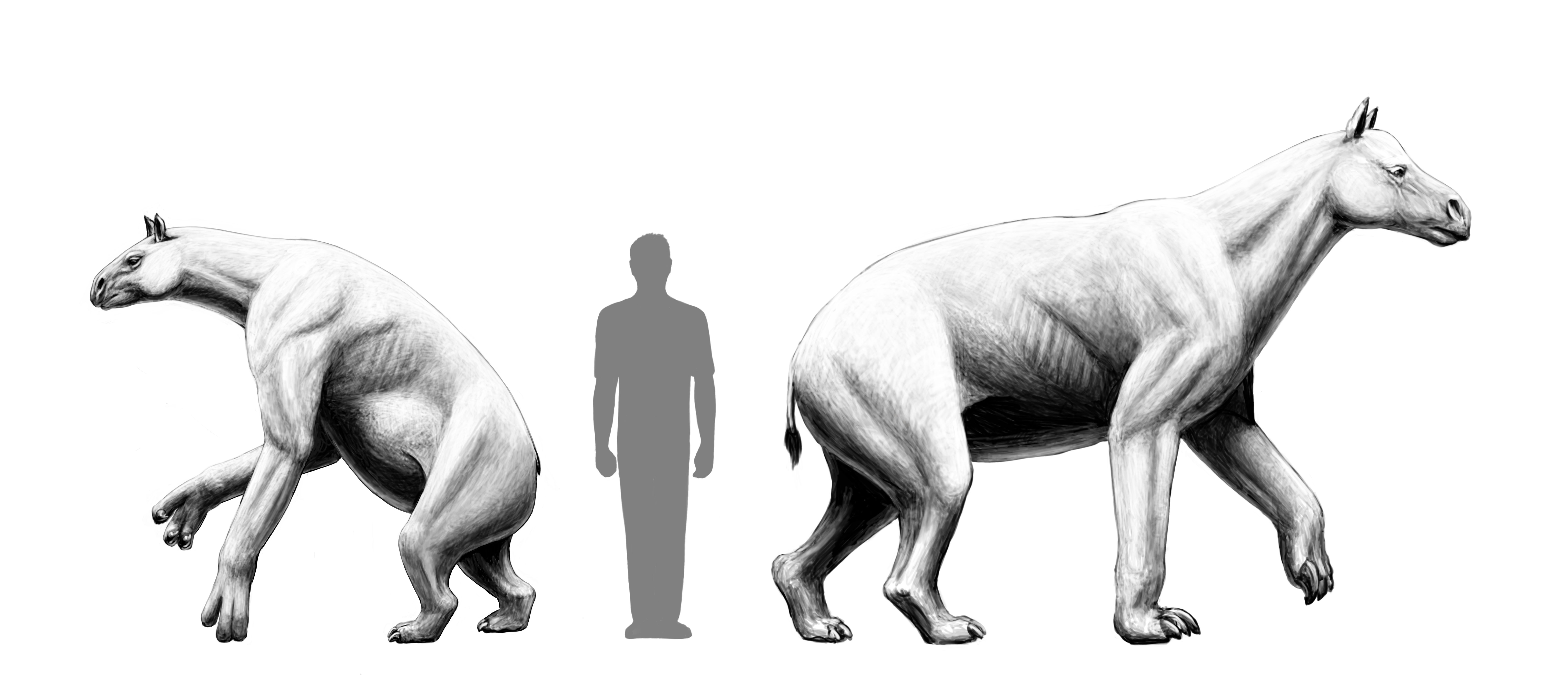
Chalicotheriidae Size Comparison
There are two subfamilies of the family Chalicotheriidae, the Chalicotheriinae and the Schizotheriinae. In this illustration for a paper by Panagiotis Kampouridis and colleagues (Kampouridis et al., 2024) you can see Anisodon and an unnamed genus of Schizotheriinae, both of which were found at the Hammerschmiede locality.
Apr 2024
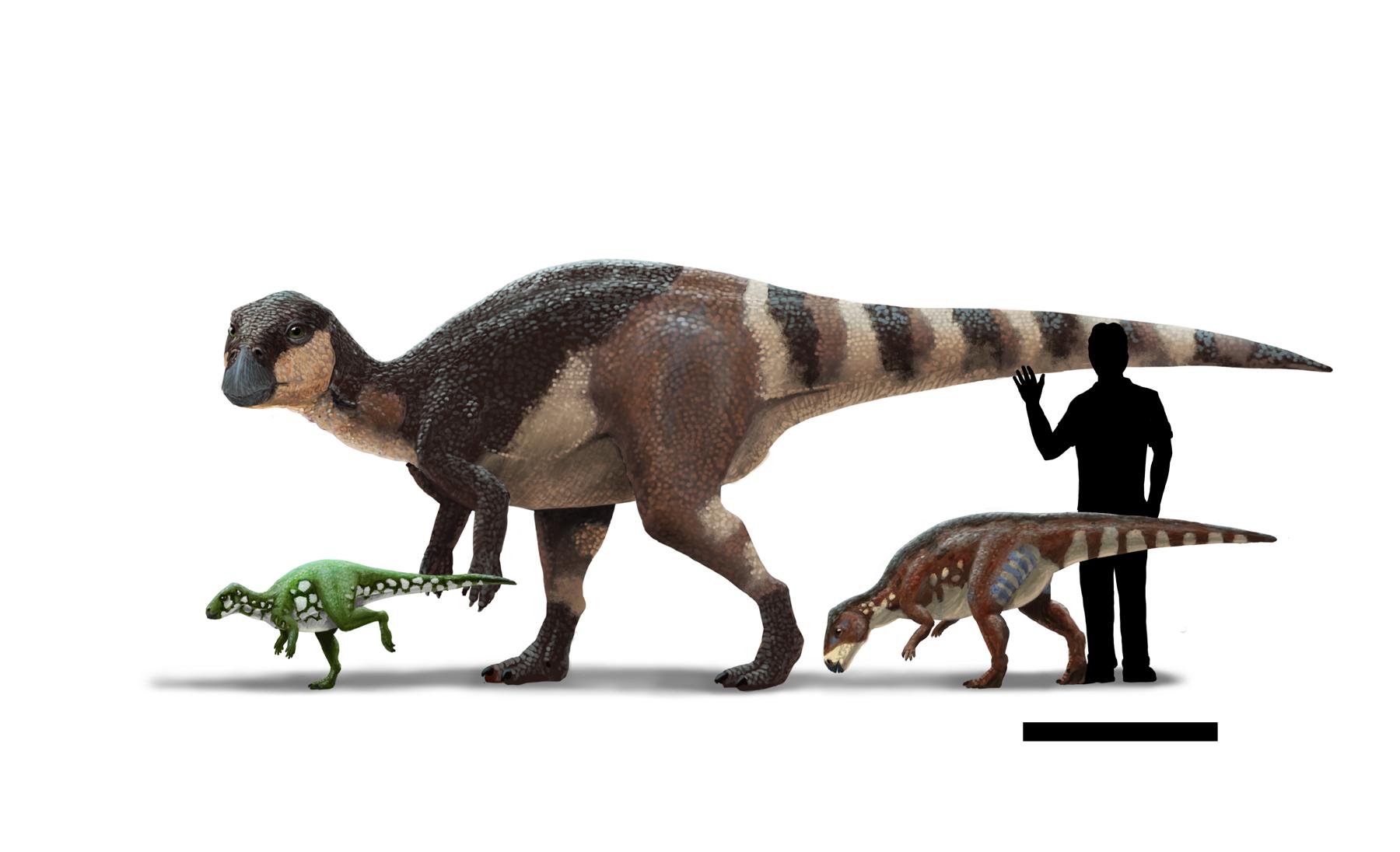
Rhabdodontid Size Comparison
This size comparison of Mochlodon, Rhabdodon and Transylvanosaurus was done for an article about rhabdodontids by Felix J. Augustin, Attila Ősi and Zoltán Csiki-Sava.
Aug 2023
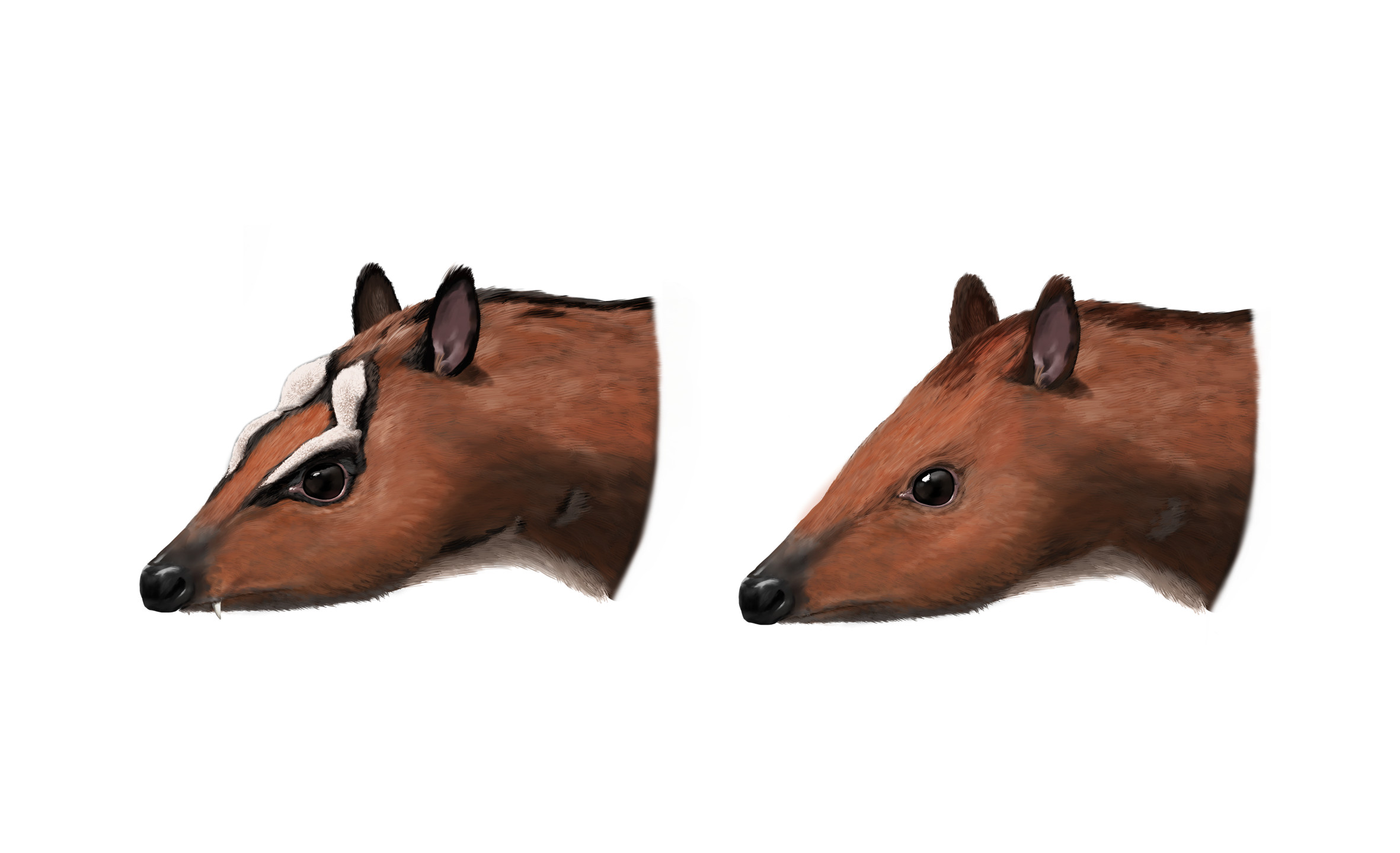
Dorcatherium naui Sexual Dimorphism
Done for a paper by a paper by Hartung and Böhme, 2022, this illustration shows the sexual dimorphism of Dorcatherium naui.
May 2021
Featured in:
– Hartung & Böhme, 2022
– phys.org
– …
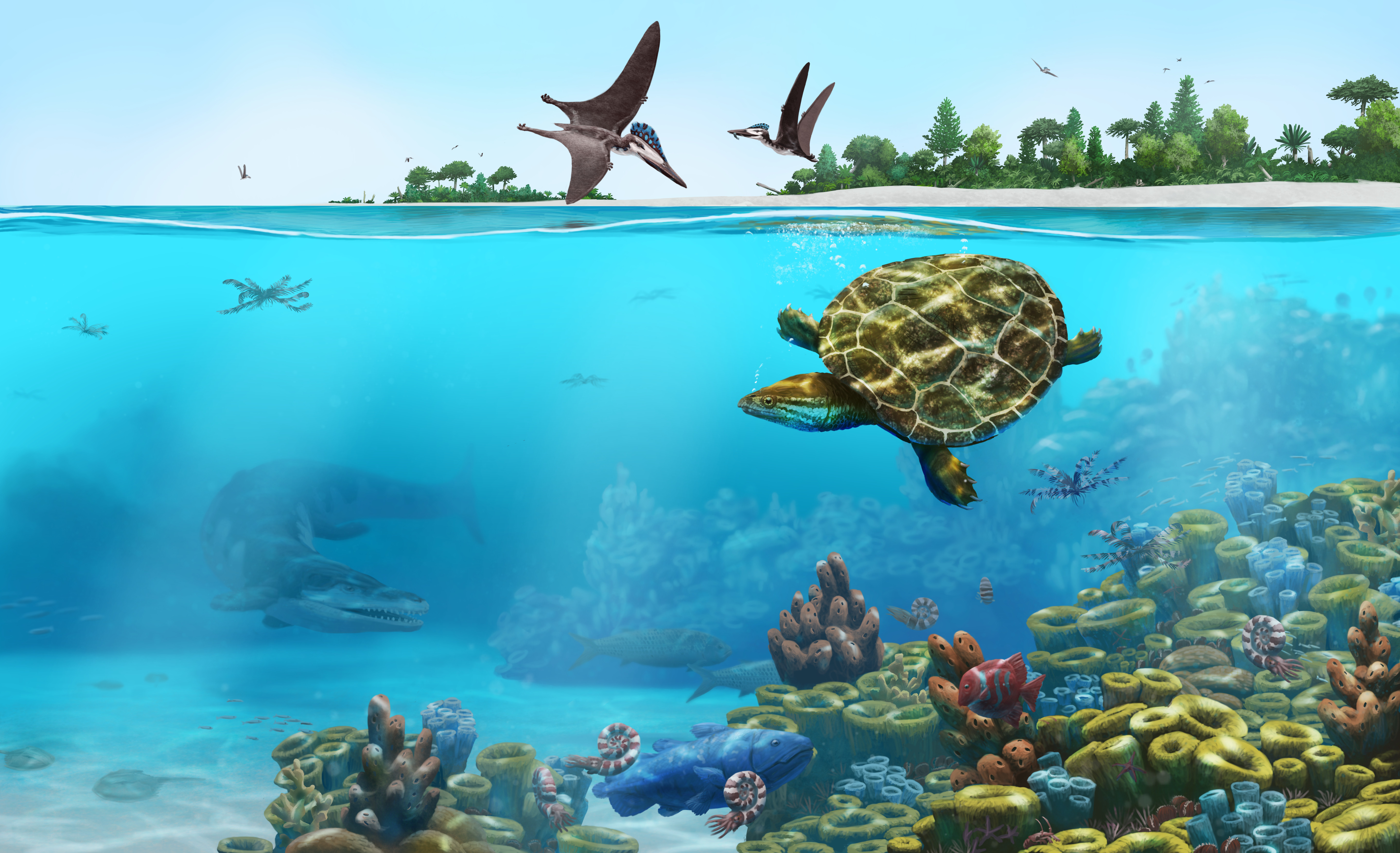
Solnhofia parsonsi
The turtle Solnhofia dives into the turquoise waters of a tropical sea, while Pterodactylus soars above the surface and the marine crocodylomorph Dakosaurus hunts between the sponge reefs. The warm waters are home to crinoids like the floating feather star Saccocoma, arthropods like the horseshoe crab Mesolimulus, and cephalopods like the ammonite Lithacoceras, as well as a multitude of fishes like Thrissops, Gyrodus and the coelacanth Undina.
This piece was done for Felix J. Augustin and colleagues (Augustin et al., 2023) as well. Despite not being breaking news, it gained broad media attention.
Commission for press release, Jul 2023.
Featured in:
– New York Times
– National Geographic
– Spektrum der Wissenschaft
– …
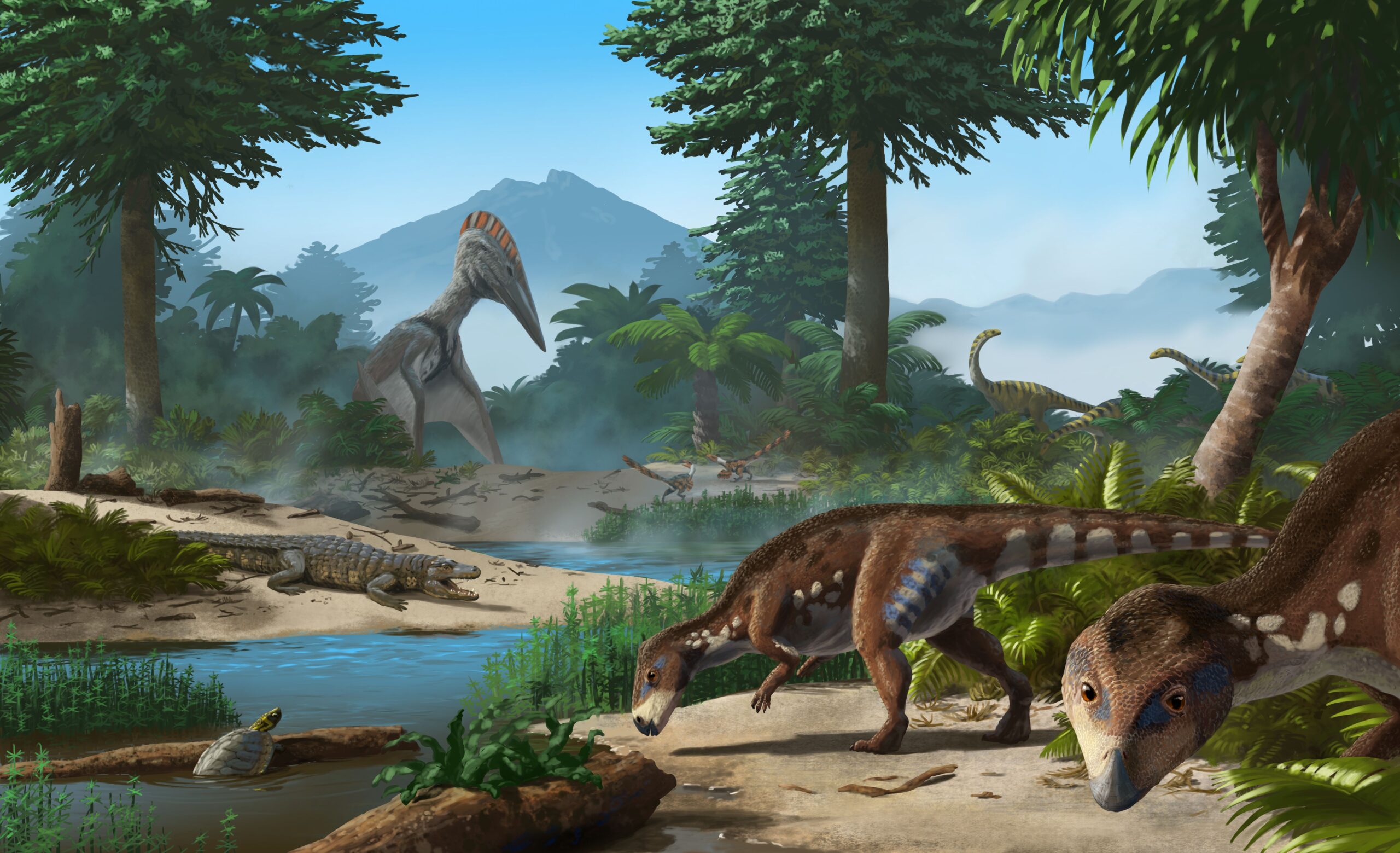
Transylvanosaurus platycephalus
The small ornithopod Transylvanosaurus from the Late Cretaceous of Romania lived alongside turtles like Dortoka, crocodiles like Allodaposuchus, other small dinosaurs like the sauropod Magyarosaurus and the giant pterosaur Hatzegopteryx on the ancient volcanic island of Hateg.
This environmental reconstruction for Felix J. Augustin and colleagues (Augustin et al., 2022) was my first real commission, encouraging me to invest more time in paleoart.
Commission for press release, Dec 2022
Featured in:
– BBC
– Spiegel
– tagesschau
– …
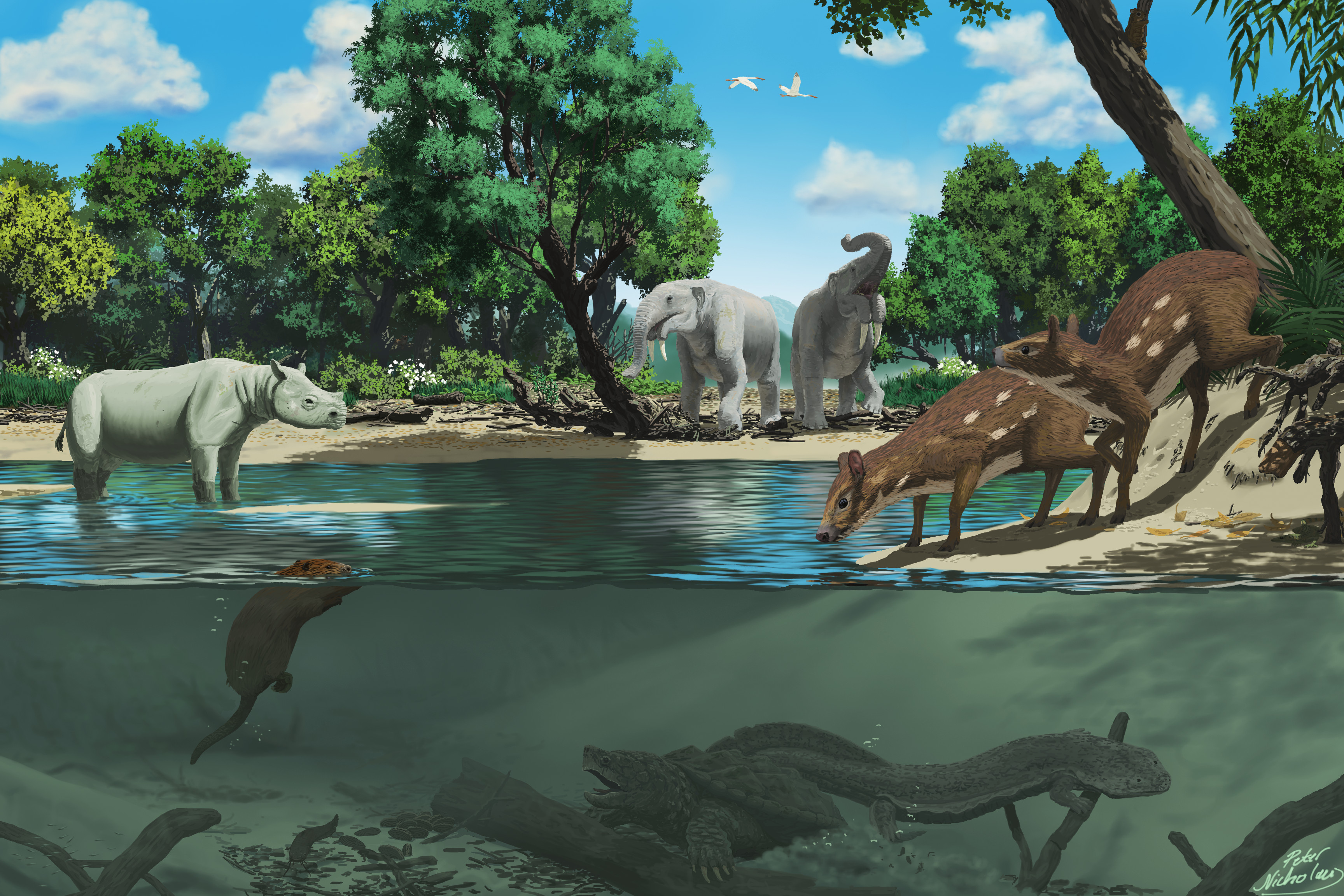
Hammerschmiede Miocene Fossil Site
This was not really a commission since it was just made for fun, but it is still used by the paleontologists at the Hammerschmiede near Pforzen, Bavaria, Germany. This fossil site was discovered in a huge clay pit and dates back around 11.6 million years ago. In the Miocene, this place was home to over 150 animal species, including the ones featured in this image: Deinotherium, Hoploaceratherium, Dorcatherium, Euroxenomys, Silurus, Chelydropsis and Andrias. However, it is most famously known for two hominid species, Danuvius guggenmosi and Buronius manfredschmidi.
This image was on of my first real paleoart pieces and got me some attention from other paleontologists, which ultimately led to the commission for Transylvanosaurus.
Oct 2019
